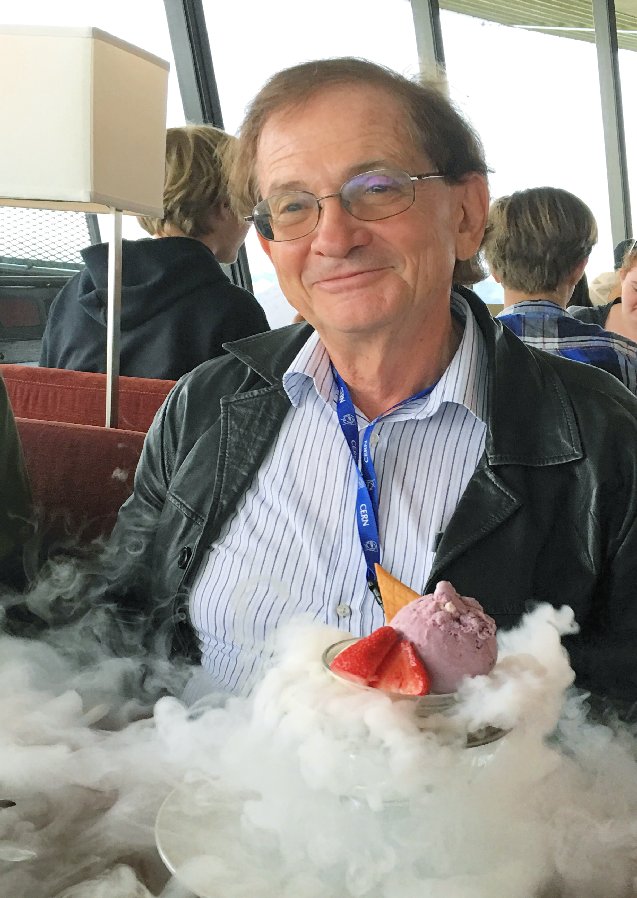Johann Rafelski, Homepage,
Professor of Physics, The University of Arizona Research profile
 Current Matters
Why Special Relativity Matters
Curriculum Vitae
Publications by Catergories
Books authored and edited
Current Matters
Why Special Relativity Matters
Curriculum Vitae
Publications by Catergories
Books authored and edited
Strangeness (and charm, bottom) publication list
Student and Teaching information
List with pdf links of recent talks
Essay: How was QGP discovered?
Google Scholar list of publications
YouTube channel: "Creation of Matter"
Research profile
The era of modern physics began in the early 20th century with the understanding of the consequences of electrodynamics and the resulting formulation of special relativity theory. Rapid development continued with quantum theory, which resulted in the discovery of antimatter and the realization that a transformation of energy into matter is possible, allowing us to describe the processes in the Big Bang. Our current understanding of quantum theory shows that the structure and properties of the relativistic invariant quantum vacuum (i.e., the physical properties of matter-free space) determine the laws of physics. This understanding and the potential control of energy and matter conversion could affect the future of humanity as significantly as the discoveries in the fields of electromagnetism and relativity theory influenced our last 150 years.
Dr. Johann Rafelski, theoretical physicist, formerly a scientist at CERN, and Professor at the Universities of Frankfurt and Cape Town, has been working for more than 30 years at the University of Arizona (Tucson, USA). For many years, his research has focused on the areas described above. He works in several disciplines of subatomic physics to further the understanding of the nature of the quantum vacuum. Among other things, he investigates the behavior of matter under extreme temperature conditions and the effects of the strongest forces. Under such conditions, the quantum vacuum is drastically changed and can be experimentally investigated.
With collisions of atomic nuclei at the highest available energies, one can lay the groundwork for such investigations. Rafelski, as a scientist at CERN, has collaborated in the creation and development of this research program. The temperatures reached in laboratory - 300 million times hotter than the surface of the Sun - can transform the nuclear matter into a new phase of hot quarks and gluons. The vacuum forces surrounding the quarks are dissolved upon reaching such high temperatures.
In his scientific work addressing the behavior of the new quark-gluon state of matter, Dr. Rafelski deals with transformation processes of energy into matter and antimatter, and in particular with the production of strange quarks - see the "Open" review Discovery of Quark-Gluon Plasma: Strangness Diaries (EPJ-ST Volume 229, number 1, pp1-140, January 2020). These particles also allow conclusions to be drawn on the properties of quark-gluon plasma, which are the subject of experiments at CERN in Geneva and at BNL in New York. Further relevant experimental facilities are being readied e.g the FAIR project in Darmstadt, Germany.
In investigating the behavior of individual particles under extreme conditions, Dr. Rafelski is especially interested in the effect of radiation, a vacuum frictional force caused by acceleration. Every charged accelerated body emits radiation. If the acceleration reaches a certain threshold, then this radiation generates a strong friction, which changes the particle dynamics decisively. Under these conditions, force field energy is converted into matter and antimatter. These processes help in the search for the mechanisms causing the formation of quark-gluon plasma. A related field of Dr. Rafelski’s work is the radiation generated by laser pulses.
Other areas of research that interested Dr. Rafelski in the past decade include: the postulated cosmic neutrino microwave background; vacuum fluctuations caused by elemental forces and their relation to dark energy; dark matter in the form of massive compact ultra-dense objects (CUDOs); and the application of laser pulses of high intensity in nuclear fusion.
These research programs have led to the publication of a large number of scientific publications, and the involvement of many students and presentation of research textbooks. More recently Dr. Rafelski has become interested in teaching students the basics of special relativity theory with the perspective of historical development leading on above new fields of research. His books, "Relativity Matters" (Spring 2017) and "Modern Special Relativity" (Spring 2022) introduces graduate and undergraduate students to special relativity and instructs them on that subject through their careers while also explaining the current research topics introduced above.
Dr. Johann Rafelski is a Fellow of the American Physical Society (APS) since 2011; he has been elected member of Academia Europea in 2021. Dr. Rafelski has been a Fulbright Fellow Summers 2019, 2021, hosted by the Wigner Research Center for Physics in Budapest. In Spring 2022 he was elected foreign member of the Hungarian Academy of Science. Prof. Rafelski has been elected to the Senate of The University of Arizona for the periods 2018-2020-2022. He is elected member of the University of Arizona Strategic Planning and Budget Advisory Committeee (SPBAC) 2022-2024.
As of June 2020 the YouTube channel: "Creation of Matter" provides both historica and educational insighs into some of the research interests described.
Created August 21, 2017, updated 2019-2022